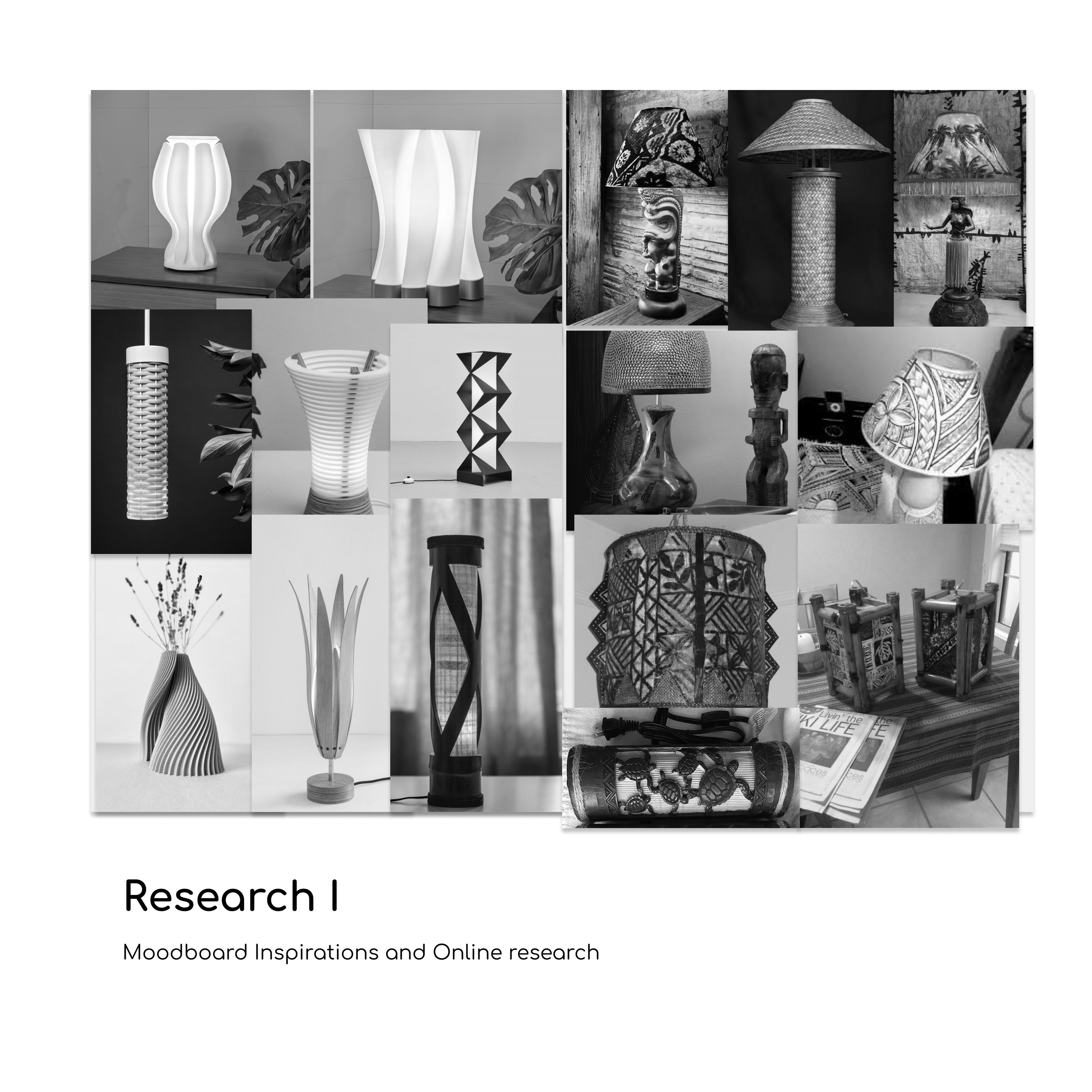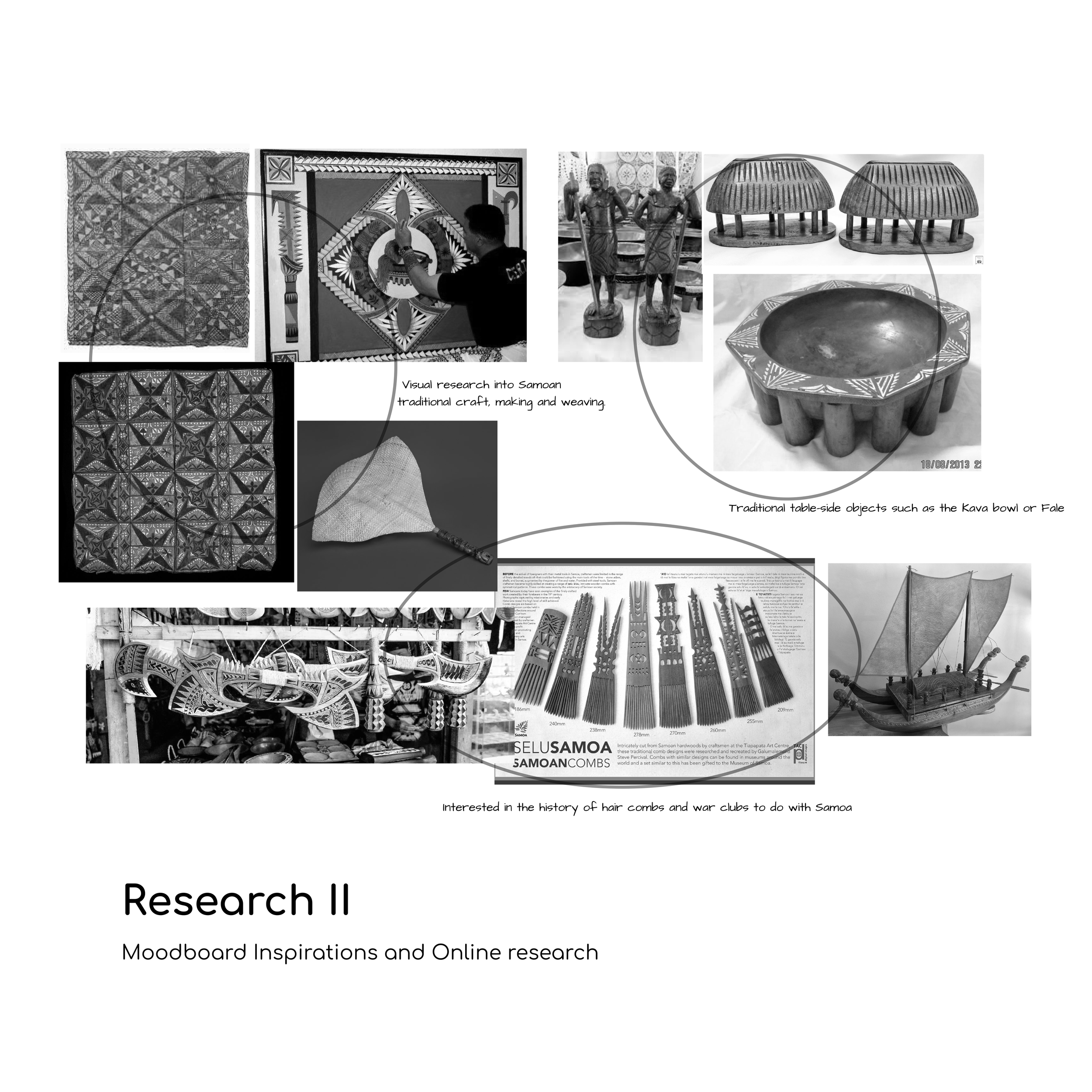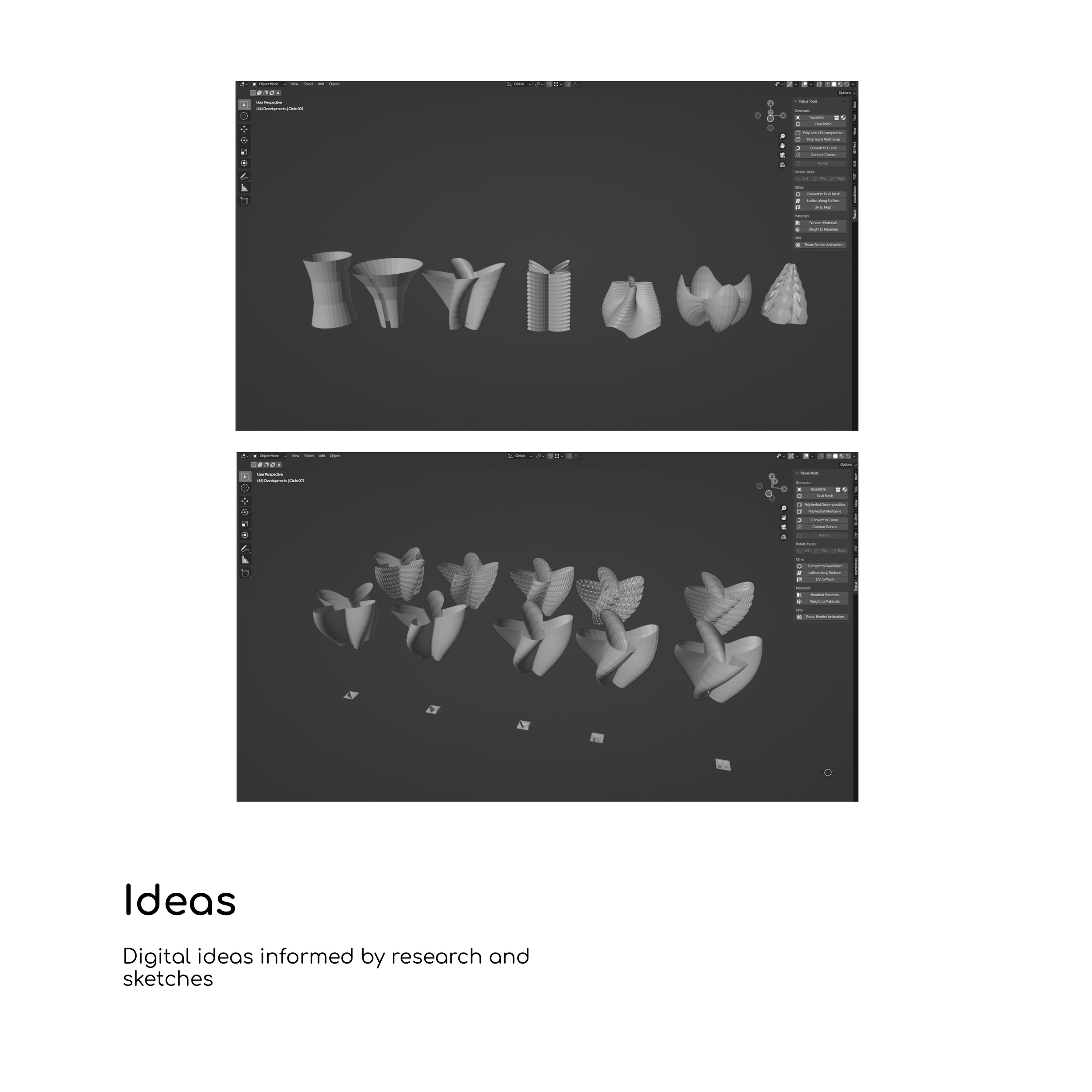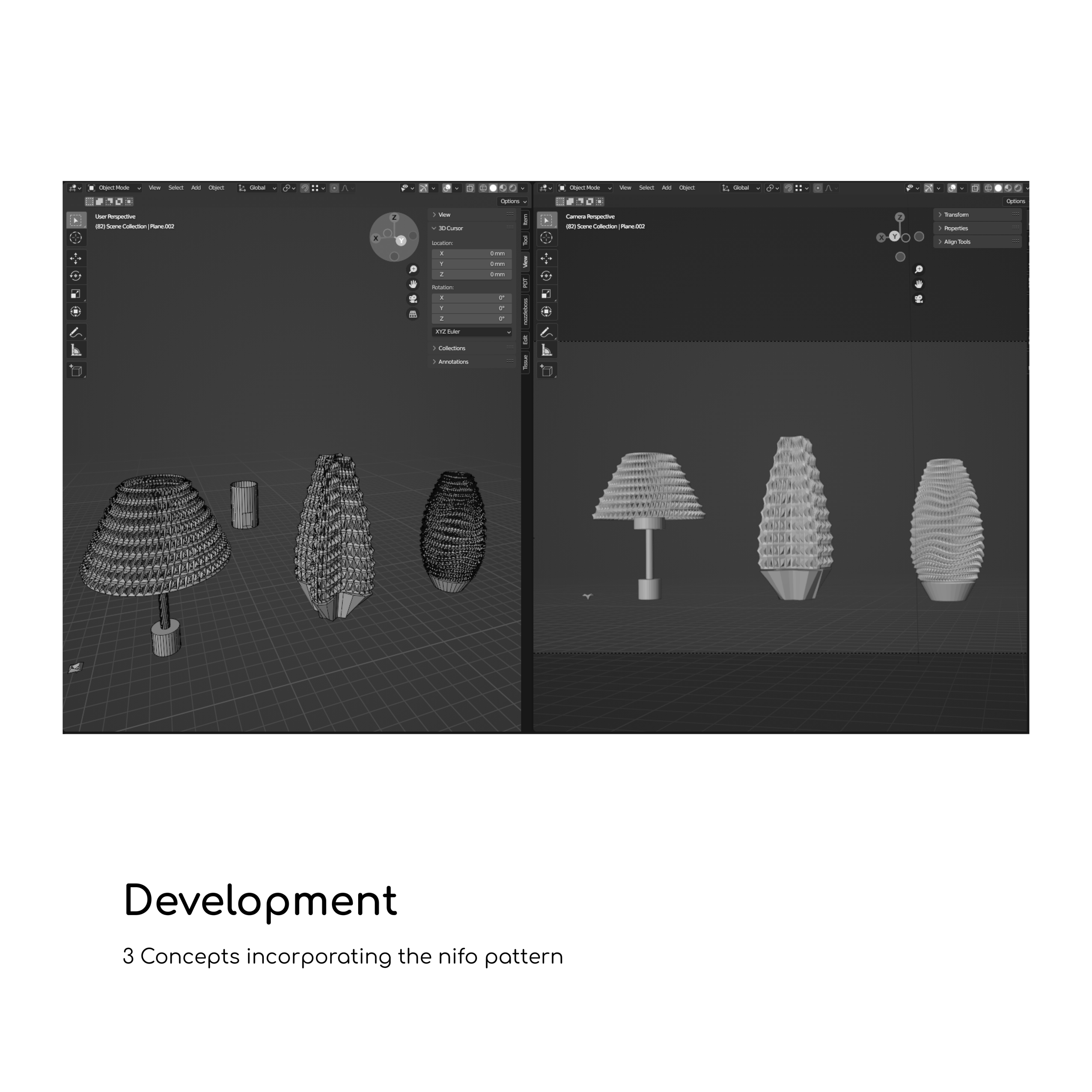
Petone Groom
SummaryPetone Groom is a New Zealand-born Samoan, raised in Wellington. His familial roots extend to the villages of Fasito'otai, Falealili, Vaivase-uta, and Salailua. His creative practice involves utilising digital software to create Samoan patterns and motifs into physical objects through 3D printing.
Petone centers his creative passion around the concept of innovation, consistently rethinking and reimagining the world through a Diasporic Samoan lens. He is one of the founders and directors at Vain Creative, a proudly Pasifika owned and operated design studio based in Wellington.
Creative Process
Earlier this year, I developed a suspended light shade series named, Masina Fou Lights for the Te Matapihi exhibition at Toi Poneke Gallery. My intention for the Fale-ship residency was to to explore and develop Masina Fou into a table/desk lamp. However, the plan changed and has led me through a journey with an alternate purpose and meaning.
I have always found the pre-colonisation material culture within Samoa an inspiring resource; it continues to inform my creative direction when developing my Art.
So when researching during this residency, I noticed a direct correlation between the shapes and patterns of traditional wooden Samoan ‘war blade’ called Nifo Oti with the digital forms I was previously creating on Blender.
The Nifo Oti became the focal point of my art piece, the meaning and look all centered around my interpretation of the shape. The Nifo Oti in the modern Samoan context is used as a ceremonial knife for dancing, often materialised in metal, whereas I am interested in the crafters' weapons mainly carved out of wood. I find similarities in how I digitally craft and model objects for a 3D printer to how a traditional carver would create with the tools and technology available to oneself.
Creative Workspace
This passion of innovation lead me to start a design studio with my mates in 2021, Vain Creative. Our studio is based at Toi Poneke Arts Centre. This is where my residency took place. Running a small business while also trying to make time to create has become difficult but overall, the 2-week experience has allowed me to deepen my connection with the visual language of my culture. I am excited to continue to develop this digital process and am grateful for the opportunity to share an aspect of my creative process (also still in development).




Final Work
The Nifo in its first manifestation is a sharp shape used to inflict cuts and wounds on one's enemy but for me, this shape now symbolises courage and strength in the form of a light.
Fale-ship Questionnaire
How has 3D Modelling / Printing influenced your art practice?
A strong reason I enjoy modelling different objects through Blender is because I can focus more on the form, and function without physically stressing about carving and tooling intricate objects by hand. There are still post-processing techniques often required after 3D printing, however, you could test print different variations of your designs in 1 day and speed up an aspect of the creative process.
What were some highlights you came across during your residency?
I enjoyed my time modelling and shaping this piece as the forms were visually pleasing and there was minimal technical fix-up required for 3D printing.
When your Fale-ship Residency is eventually launched online, what would you like people to take away?
I developed “Masina Fou” into a table lamp, to quite literally bring to light the often perceived dark times of Samoa carving weapons.











